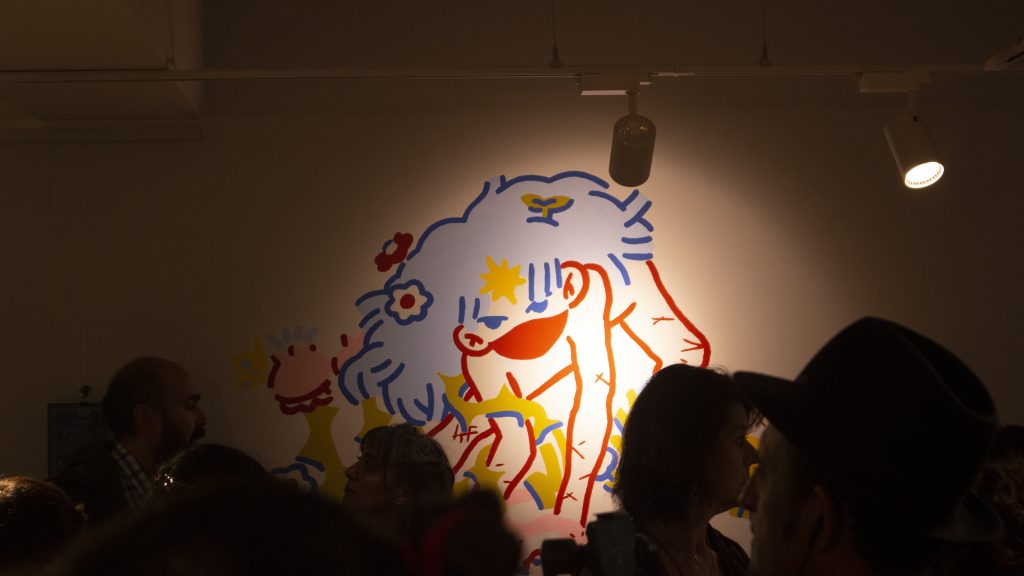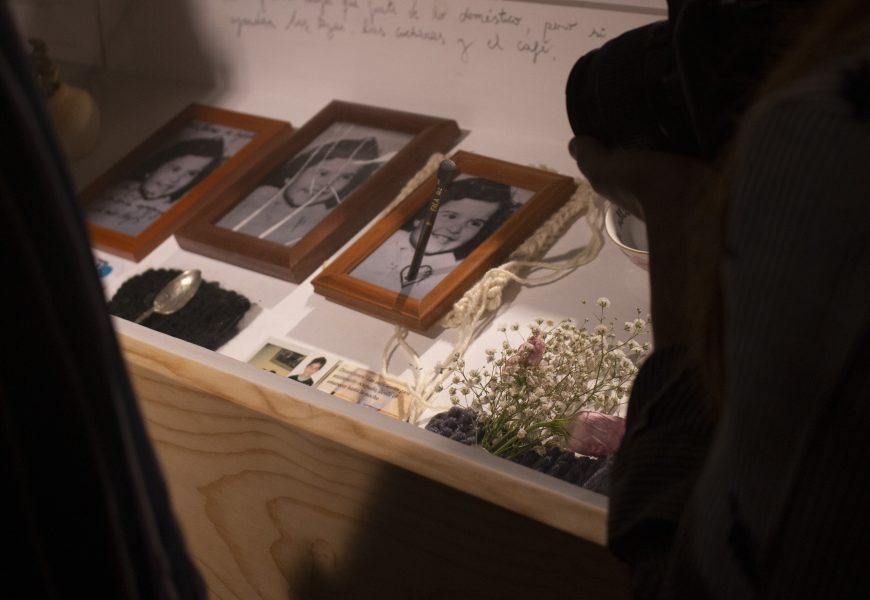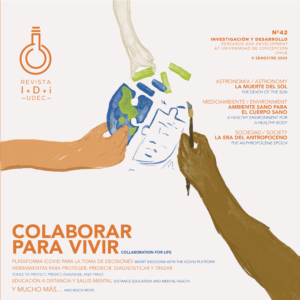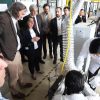By: Iván Tobar, journalist VRID UdeC / ivtobar@udec.cl | Images: courtesy of the project
With the support of institutional funds from the VRID Artistic Creation contest, the Invisible Archives – Penquista Artists 1980-2020 project provided a space to reflect on the circumstances in which artistic activity has taken place in our area in recent decades.
Under the leadership of Professor Natascha de Cortillas Diego of the Department of Plastic Arts, this project was a collaborative effort, implemented together with Bárbara Lama Andrade and Constansa Vergara Andrades. In this interview, the researcher shared the main findings and challenges arising from this proposal’s results.

The Master’s graduate in Visual Arts from the U. Nacional Autónoma de México (1998) highlighted how “each artist understands what, of their history and memory, is relevant to be told and raised as an intersubjective indicator, to present or amplify the notion of archive.”
“… Thus, it was possible to observe a documentary archive based on journalistic or editorial information, and on the other hand, an object archiving exercise, or the archiving of a work that is not seen, that is censored, that somehow remains buried and that did not have the possibility of circulating,” she adds.
What are the goals of this project?
“To build a visual/virtual archive that responds to the needs and absence of local art historiography based on the research carried out in the context of the (In)visibilities exhibition, Archive of Penquista artists, 1980-2020, allowing the circulation of works and artistic processes of women of Concepción, generating a space for dialog and joint reflection that discusses the absences and biases of our art historiography and densifies some of the fundamental criteria of the project as Memory and Archive in the Penquista art scene.
We are interested not only in archiving documents but also in how a specific symbology of our experiences, creative processes, and languages is embodied to think about an exercise of curatorial co-creation through the exhibition of showcases that configure visualities from the notions of an archive as documents, objects, and work, rethinking the showcase as a possible objectified work.
What experiences would you highlight from the people you collaborated with?
The practice of art is the practice of visibility or invisibility, omission, and erasure, basically because there is a historiographic way that makes the other invisible and erased. Gender issues are currently being discussed at length by artistic expressions in general. That is why the project integrates diverse languages and even a professionalizing exercise that does not participate in academia but emerges from one’s trades and interests, erasing those biases of the same patriarchal and chauvinist model that has been imposed on all institutionality and ways of thinking, so that we can also be an echo of replicating that way of thinking. This is how we find a group of women, former political prisoners, who have made a play based on their experiences as sexual political detainees. They took on this commitment and debt to their life experiences without being theater people.
What other topics are covered in this review?
For example, how we are cultivating a collective exercise of memory, which is not past but constantly present when we inhabit it. All with invisible stories and a collective memory that, somehow, we feel the exhibition has also embodied: that displacement of oblivion. It cannot be read without understanding gender. However, it is a place that we experience as a country and in the Latin American context. Being invisible is not manifest knowledge; the latencies of things begin to make sense to us. That’s why there is a need and urgency for that latency to be manifested.
How does this phenomenon of invisibility, which gives the project its name, occur?
In the historical reflections of national art, women appear subordinate to the official patriarchal narrative that has made the relevance of their works invisible and made it challenging to create an archive of them. Therefore, we propose to question the links between history, art, and archives, starting from the creative processes, seeking to contribute to an archive from the memories and subjectivities of women to create a narrative of art, placing the gaze from the experience of the artists participating in different historical moments of the Penquista cultural scene. Memory is a political gesture that links us as a territory and community.
How is this collective sense achieved?
Firstly, in the methodological conceptualization of an exercise of co/creation where each one makes her work and reflection available for this collective curatorship, and on the other hand, the intergenerational communion that overcomes differences to embody a typical exercise of visibility, revealing the concealment processes, which define the diversity that we are and represent, each in its context, with our themes and our views, but, deep down, we felt really linked in terms of what we were like in an exercise of reexamining our archives, a history and a past that, somehow, was like a tragic loop that identified us. The challenge now is to systematize the entire journey made with that first project, understanding that this corpus has to grow and add more artists and women.








